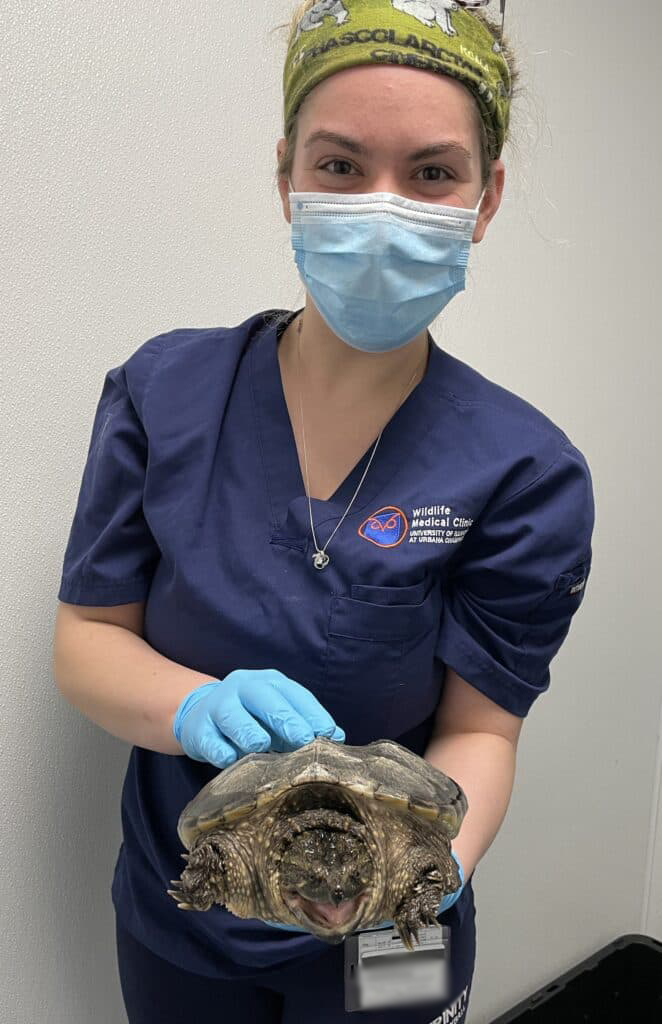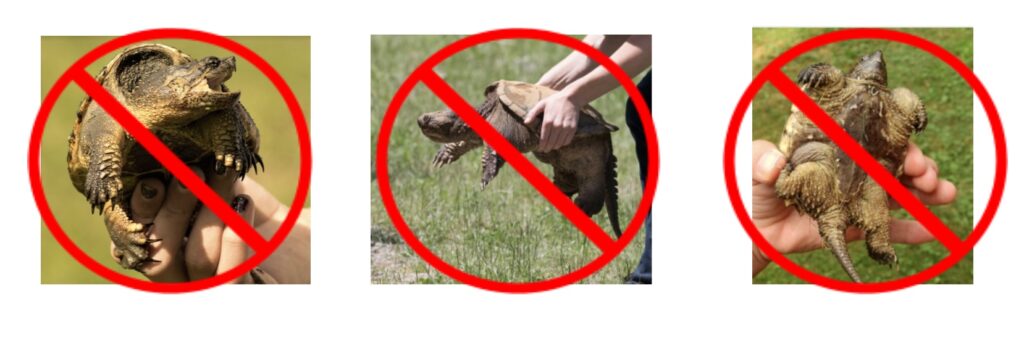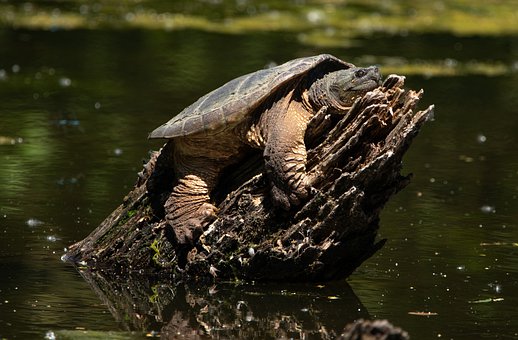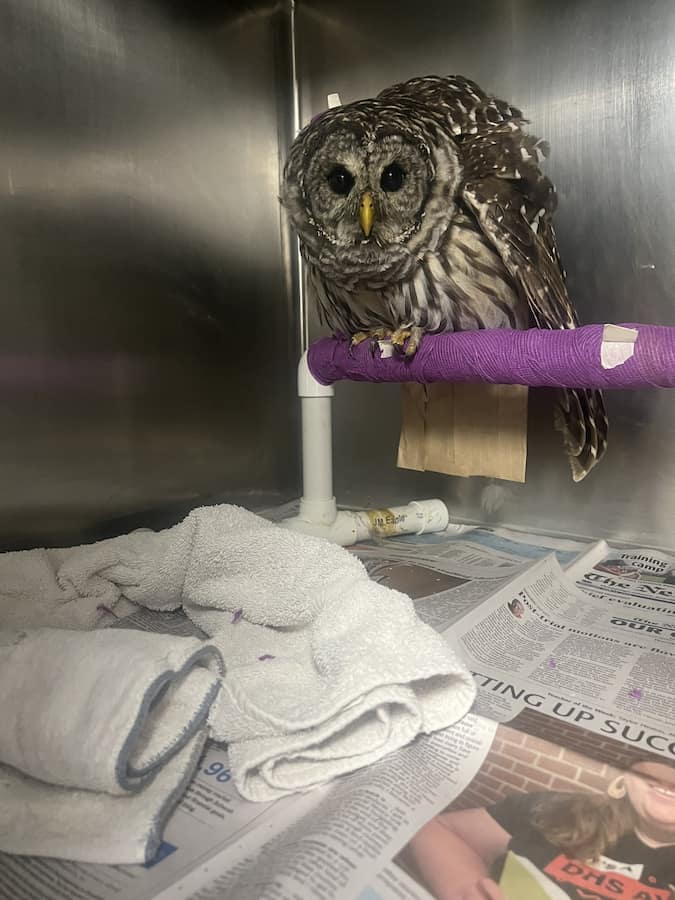There are many native species of turtles found in Illinois. Arguably, one of the most memorable species that presents to the Wildlife Medical Clinic (WMC) is the common snapping turtle (Chelydra serpentina). Snapping turtles are a freshwater species, range in coloration from tan to dark brown, and have characteristic spiked tails. The WMC cares for several snapping turtles each year, some mere hatchlings weighing only a few grams, to large adults with impressive biting power! This species continues to grow throughout its life, with the largest individual on record weighing nearly 75 pounds.

Snapping turtles are omnivores, with their natural diet consisting primarily of plants, insects, fish, and smaller turtles. Mating season occurs in the warmer months and is often the only time these turtles are seen out of the water. A single female will lay a clutch of 20 – 40 eggs each year. Shockingly, studies show only 5% of snapping turtle eggs laid will hatch and approximately only 1% of those hatchlings will survive until reproductive age. Most snapping turtles are considered mature enough to reproduce once their shell is eight inches long. Interestingly, how quickly a turtle reaches this size is dependent more on environmental temperature and food availability than an individuals’ age.
Handling or providing medical care for a common snapping turtle must be performed cautiously. Common snapping turtles have extremely long, flexible necks which they can leverage with lightning speed to bite any threats along nearly their entire body length. Those bites pack quite a punch, with an estimated biteforce of 209 Newtons (47 pounds) of force! If you are lucky enough to see a snapping turtle in the wild, it is best to leave it alone as they are rarely aggressive unless threatened. If you encounter one the road, it is preferred to coax them in the direction they are headed with a shovel or car mat to keep you both safe. Snapping turtles should only be handled if they are believed to be injured or sick, preferentially transporting them in a box or hard sided container with minimal handling to prevent bite injuries. While tempting to avoid being bit, it is harmful to carry a snapping turtle by its tail. Below are some additional examples of incorrect or dangerous ways to handle snapping turtles:

As always, if you suspect an injured or ill snapping turtle, you are welcome to contact the Wildlife Medical Clinic or your local licensed wildlife rehabilitator for recommendations on how to safely help it.
Written By: Maura Ryan, Class of 2024




